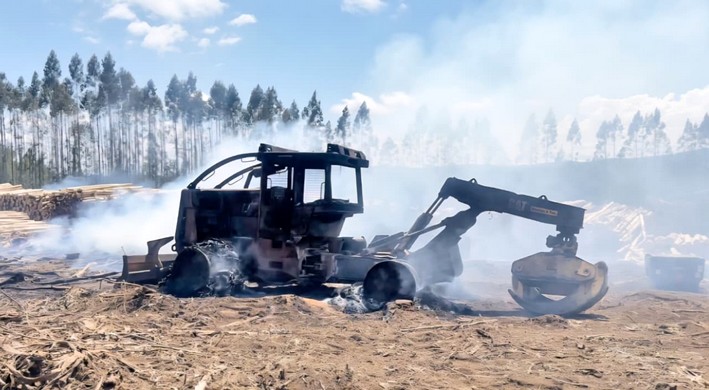Female Participation in the Forestry Sector Continues to Grow in Chile
The Más Mujer Program by Corma is yielding results, as in 4 years, there has been a 4 percentage point increase in female labor participation. The goal is to reach 30% by 2026.
If there is one sector historically dominated by men, it is forestry. It is well known that men hold the majority of roles in this field, which is essential for the country's economy, despite facing challenges like wildfires, attacks, and other incidents in recent years.
However, women have gradually been gaining ground in this world of forests, timber, innovation, and management—some of the many facets of forestry work.
In this regard, several institutions are leading initiatives to encourage women to join this sector, including Corma, which has been running the Más Mujer Program since 2020. The program aims to provide companies with tools to create equal opportunities for women and men in the timber industry.
The goal is to increase female labor participation to 20% by 2026 across the entire value chain of the sector. Additionally, efforts have been made in four committees: wage gaps, communications, training, and best practices.
Four years ago, the First Report on Female Labor Participation in the Chilean Forestry Sector was published, seeking to answer how many women were involved in the timber industry and economically active within it. It also aimed to identify the roles these women held, how female participation compared to countries with similar forestry industry development, and the main challenges organizations faced in increasing female representation. This report revealed a 13.5% female labor participation rate in the national forestry sector.
Regarding this, Victoria Saud, General Manager of Corma, noted that the first step was recognizing how to involve 51% of the country's population. She recalled that this concern led to collaboration with other institutions to ask where women were, what they did, how many there were—even when working in the same sectors. "We emphasized that this initiative wasn’t against men or favoring women, but about working together because the world is built by everyone; we are all part of society," she highlighted.
A strategic plan was then developed with input from several women to outline their goals. A survey revealed a 13.5% female participation rate in the sector, allowing comparisons with other countries and showing slightly better results. "Corporate leadership became convinced that we add value, don’t subtract, and can bring different, innovative approaches," she noted.
This year, the Second Report on Female Labor Participation in the Forestry Industry was released, involving 40 forestry companies—30% large, 27% medium, 35% small, and 8% micro-enterprises.
Key findings included a rise to 17.5%, a 4 percentage point increase from 2020. Female representation grew across all roles: executive positions rose from 16% to 17%, supervisors from 22% to 24%, and the biggest change was in general roles (from 9% to 14%), where the gap had been largest.
Additionally, female presence on boards increased from 18% to 27%, far surpassing the national average of 14.7% reported by Chile Mujeres in 2022.
Another focus was progress in corporate strategies for female inclusion. In 2020, 17% of participating companies reported having gender equity policies, rising to 39% in 2022.
Regarding gender-focused compensation policies, 45% of companies had them in 2019, increasing to 54% in 2022.
On workplace harassment, 75% of companies now have strategies to address it—an 8 percentage point increase. Initiatives include implementing labor practice regulations (e.g., meetings, superior-subordinate relationships), internal investigations, training on best practices, and awareness workshops.
Victoria Saud stated that inclusion has been crucial, as it ensures women have the conditions to thrive professionally. However, they initially lacked role models. "There was a hypothesis that academic qualifications were insufficient for full-sector participation, and the survey confirmed a gap. Mechanical engineers or risk prevention technicians were hired, but general roles had untapped potential," she explained.
This gap wasn’t just about education but also cultural readiness—preparing organizations to welcome and adapt to women's specific needs, enabling professional and personal growth. "Because including more women isn’t just beneficial for all—it’s an ethical commitment we proudly uphold," affirmed Corma's General Manager.

















